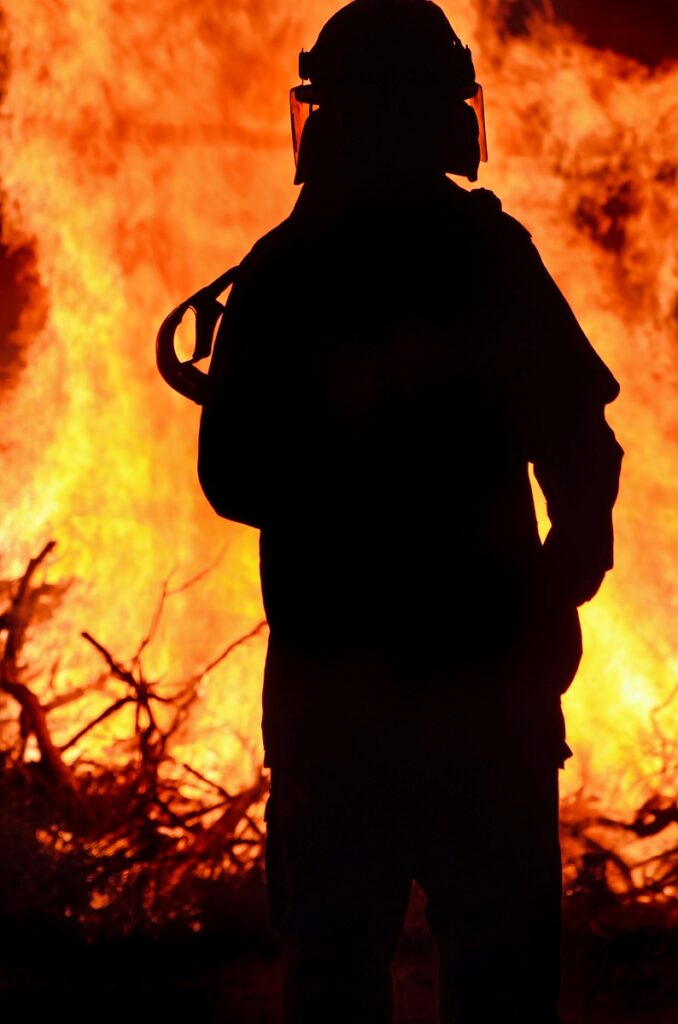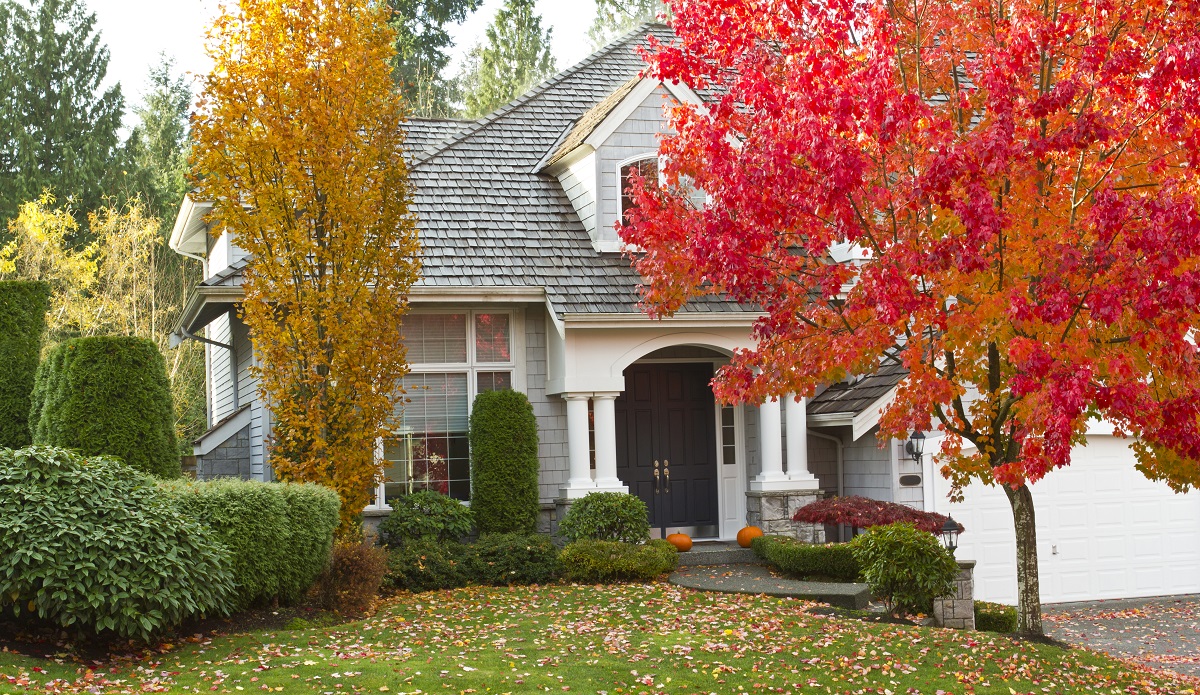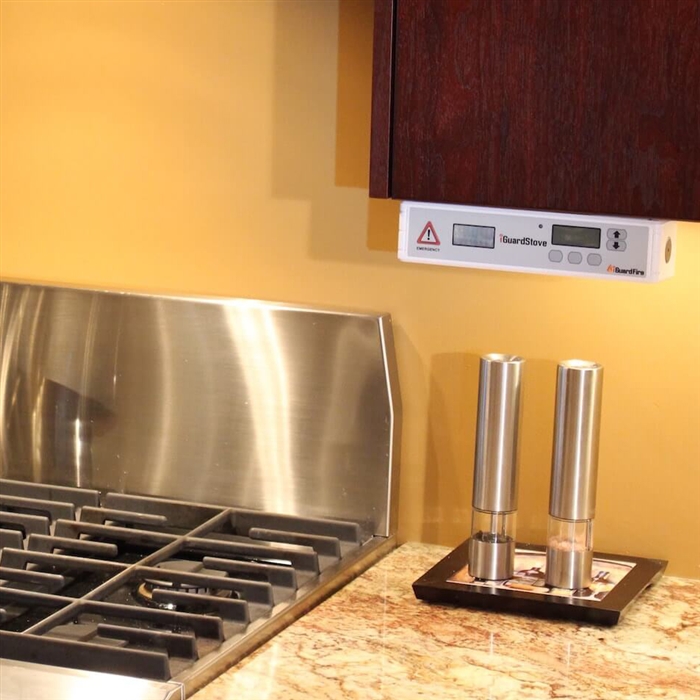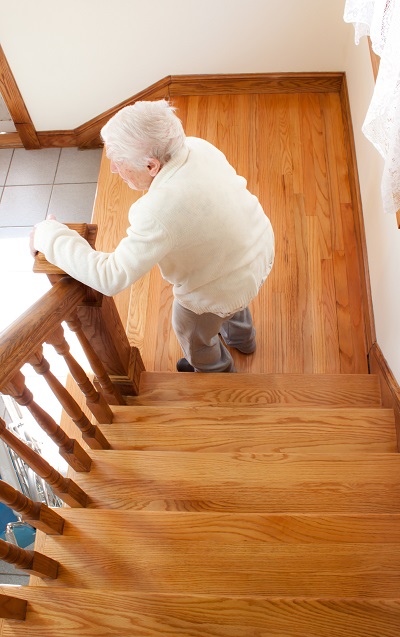As we celebrate the first day of fall today, we welcome the season that means back to school, football games, beautiful orangey-red-yellow foliage, snuggly sweaters.
For family caregivers, autumn also brings twin concerns for older or vulnerable loved ones living at home alone: falls and fires. According to Pew Research, more than 12 million Americans over age 65 live alone in their homes and more than 61 million adults live with some type of disability, whether a wounded veteran or an adult with an intellectual disability (IDD) or special need such as autism.
Below we explore how to solve the concerns about falls and fires to give family caregivers peace of mind and older adults the freedom they enjoy living at home.
Fire Season Means Fire Prevention
Autumn winds are no friend to firefighters who are battling thousands of fires from late summer to October and November in California and other dry western states. Older adults aging in place are particularly vulnerable since many ignore fire evacuation warnings or are too frail to get out in time. According to the U.S. Fire Administration, older adults are more than twice as likely than the general population to die in fires.
But fire season is only one part of the fire hazards facing those aging in place. Fires caused by smoking are the leading cause of fire deaths for seniors but fires caused by cooking are the leading cause of fire-related injuries in the older population.

A big risk factors for fires in the home, especially for those with dementia or cognitive issues, are kitchen fires. A 2020 report by the U.S. Fire Association found 50% of these fires were the cause of forgotten or unattended stove cooking and people age 85 and over were more likely than any other age group to die in a home fire.
One solution offers a new level of protection unique in automated smart appliances. iGuard is an automatic stove shut-off system using an easy to attach sensor box connected to and near the stove along with an app for alerts and monitoring. If a stove is left on, within 4 minutes of the sensor indicating no one is near the stove, an alert is sent to the senior and their family caregiver and within 5 minutes the stove is completely shut-off. Other apps and smoke alarm dependent systems can take 8-15 minutes to turn the stove off.
“Our system is unique in that most other solutions require the heat to trigger the smoke alarm before shutting down which can take longer than 5 minutes and is a two-step process,” said Jon Landers, chief marketing officer for iGuard. “By that time a fire has already started whereas our system actually prevents the fire from happening.”
According to the National Fire Protection Association, most home fires caused by cooking peak during the holiday season from Thanksgiving through to New Years Eve.
Landers adds that with their system family caregivers have peace of mind, whether living long distance from an older loved one or just wanting to take break for a walk.
“We have older customers who have been able to stay in their homes longer with our system,” said Landers. “And they love the fact it does not turn off the stove clock and does not have a camera so privacy is maintained while safety is maximized.”
First Days of Fall Calls for Falls Prevention Plan
Falls do not just happen when you get older, anyone at any age can suffer a fall. However, the older we get our bones are not as strong and our recovery not as fast which can make falls more life-threatening.
According to the Centers for Disease Control and Prevention (CDC) one in four older Americans fall each year – about 36 million adults – resulting in 3 million emergency room visits and 29,000 deaths. Most of these falls occur at home and 80% of these accidents occur in the bathroom.
And, for adults with early-stage Alzheimer’s who want to remain living at home, balance issues are part of the disease progression making falls even more common within the dementia population.
Since falls can lead to traumatic brain injury or a concussion, broken bones and skin lacerations, addressing the three areas above becomes essential to avoiding alternative living solutions. In fact, falls at home are one of the top reasons for nursing home placements every year.
As a gerontologist, we look at three aspects of life
when it comes to preventing falls at home:
Physical:
Health issues, such as hypertension, requiring medications that may contribute to dizziness, lighted-headedness and fainting. Also balance, vision, hearing and cognitive issues associated with Alzheimer’s disease can all lead to dangerous falls.
Environmental:
The home environment may have trip hazards, accessibility difficulties such as stairs and slippery bathroom floor tiles and tubs, or poor lighting. Also, lack of contrast on stairs, in hallways and entry ways can increase falls risk.
Psycho/Social:
Mental health issues such as depression, bi-polar disorder, anxiety and fear of falling as well as living alone are all factors that can increase risk of falling.1
Tips for Preventing Falls
- Physical
- Recognize that some medications can lead to light-headedness. Don’t bend over and straighten up too fast.
- Consider taking a tai chi or chair yoga class to improve balance and strength.
- Get your eyes checked annually. More than 200,000 people between ages 40-60 develop cataracts, which cause blurry or dim vision, every year. People who live in high altitudes or spend a lot of time in the sun are also more at risk for cataracts. In addition, one study found wearing multifocal glasses (also called progressive lenses) can contribute to falls.2
- Environmental
- Decluttering promotes psychological health and helps remove trip hazards. Time for: Love (keep organized and out of home pathways), Loathe (trash) or Loan (donate).
- Secure rug edges by taping or velcroing them firmly to the floor or remove them. If a rug has sentimental value, hang it on a wall as comforting visual art.
- Ensure bathrooms have appropriate non-slip mats in tub and floors. Also expertly place and ground grab bars. (See our Universal Design Basics: Bathroom blog for beautiful inspiration)
- As we age the muscles in our eyes weaken making our pupils smaller. People in their 60s need three times the light of someone in their 20s. Assess home lighting and ensure there is enough illumination, especially in task areas (kitchen, laundry, closets) and add amber nightlights under the bed and on the pathway to the bathroom (amber does not upset circadian rhythms like blue lights).
- Make sure there is good contrast so aging eyes can differentiate steps, stairs, countertops, doorframes, etc. Use different materials (wood, tile) and richly hued paints (check out the Sherwin Williams Senior Living and Living Well Collections).
- Social
- Coordinate social engagements so that fears and anxieties about living at home alone are lessened. Online activities, playing games and classes to learn something new like with Get Set Up, creates community support for solo agers at home.
Additional Resources
For more information, check out a few great resources from the National Council on Aging (NCOA) that coordinates fall prevention activities at senior centers across the country and has an online “Falls Free Check-up” online falls risk assessment tool. Also, the Fall Prevention Center for Excellence, part of the USC Gerontology School, has information and resources for families as well as professionals in aging in place.
And for those with a loved one with dementia living at home, SafelyYou offers an artificial intelligence video remote sensoring system that detects gait and other risk factors for falling and can identify solutions to help falls such as moving a bed against a wall on one side if a loved one is having problems staying in the bed at night.
References
1 Cwikel, J., Fried, A. V., & Galinsky, D. (1989). Falls and psychosocial factors among community-dwelling elderly persons: a review and integration of findings from Israel. Public health reviews, 17(1), 39–50.
2 Lord, S. R., Smith, S. T., & Menant, J. C. (2010). Vision and falls in older people: risk factors and intervention strategies. Clinics in geriatric medicine, 26(4), 569–581. https://doi.org/10.1016/j.cger.2010.06.002
©2021 Sherri Snelling






0 Comments